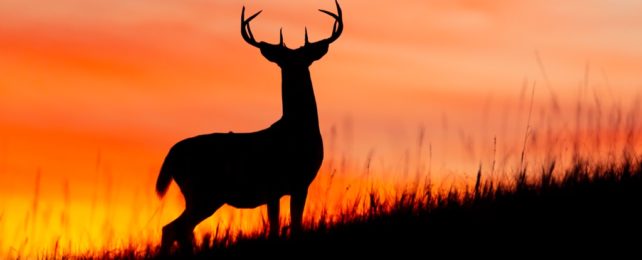Variations in the SARS-CoV-2 virus that have not been detected in human beings for some time are still going strong in animal populations – specifically, in the white-tailed deer (Odocoileus virginianus) roaming across the state of New York in the US, a new study reveals.
What's more, the viral sequences recovered from the deer show substantial genetic changes from the ones carried by humans, suggesting that SARS-CoV-2, the virus that causes COVID-19, continues to mutate and adapt over time out in the wild.
Based on the time that the samples were gathered, it seems likely that the virus is able to circulate in deer for months after its last detection in people. It's possible that these animals are acting as long-term reservoirs for SARS-CoV-2 variants.
"One of the most striking findings of this study was the detection of co-circulation of three variants of concern – Alpha, Gamma, and Delta – in this wild animal population," says virologist Diego Diel from the Cornell University College of Veterinary Medicine in New York.
The study was based on 5,462 existing samples of deer lymph tissue, collected as part of an investigation into chronic wasting disease in white-tailed deer. These samples were gathered across 2020 and 2021, and with useful data attached about when and where they were collected, plus the age and sex of each deer.
All of that data meant the researchers were able to identify hotspots where SARS-CoV-2 was particularly active. Multiple clusters were shown to exist based exclusively around particular variants: Alpha, Gamma, or Delta.
The team was also able to identify as many as 80 mutations in some of the virus variants, indicating that this wasn't a short-term visit. These mutations potentially make it easier for SARS-CoV-2 to pass to other animals, and perhaps even back to humans.
"When we did sequence comparisons between those viruses recovered from white-tailed deer with the human sequences, we observed a significant number of mutations across the virus genome," says Diel.
Across what sort of longer time scales the deer could act as a reservoir for SARS-CoV-2, or whether the virus might be able to be returned to humans, remains to be seen – these are unknowns that scientists are now trying to answer.
It's also not clear exactly how the infection made its way into deer in the first place, though it will be because of some kind of contact with humans: perhaps through hunting, feeding, wildlife rehabilitations, water sources, or wastewater.
So far, there's only one reported case of a deer passing COVID-19 on to a person, so we're still far more likely to catch it from a fellow human being. However, earlier research suggests that it's very easily passed between white-tailed deer populations.
"A virus that emerged in humans in Asia, most likely after a spillover event from an animal reservoir into humans, apparently, or potentially, has now found a new wildlife reservoir in North America," says Diel.
The research has been published in PNAS.
